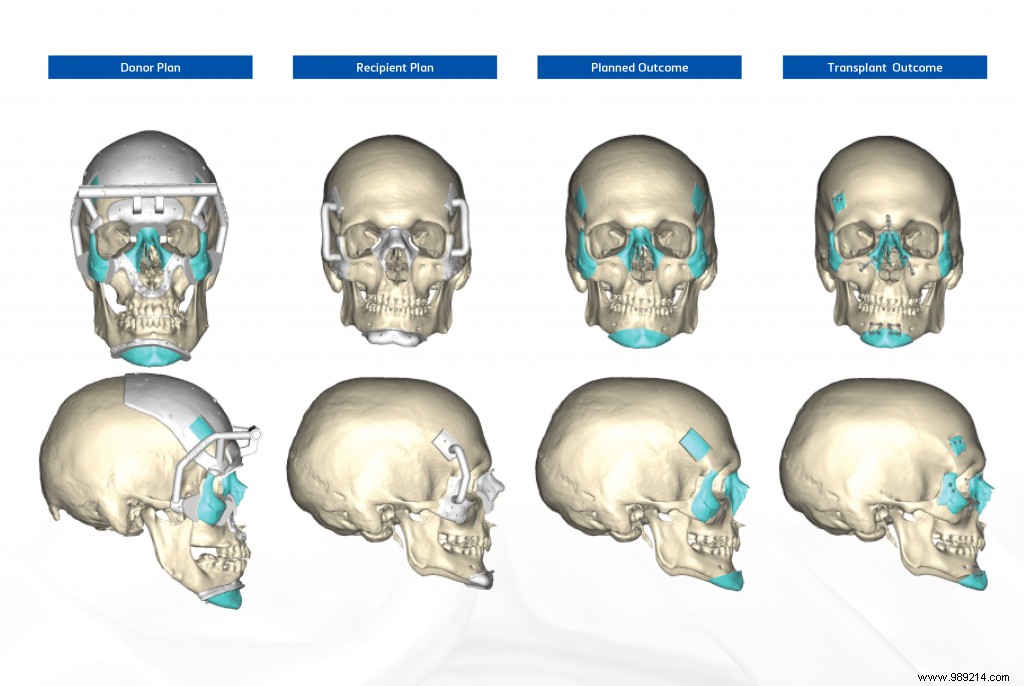A team of clinical engineers and surgeons has performed the world's first-ever double hand and face transplant. However, this great world first was largely made possible by 3D printing.
The world leader in additive manufacturing Materialize and the New York University Health Center in Langone (USA) have collaborated for a major world first. As 3D Printing Industry explains in a February 4, 2021 article, clinical engineers and surgeons recently performed the first-ever double hand and face transplant . The 22-year-old patient had been the victim of a car accident which caused burns, significant soft tissue damage and serious injuries to the face and arms. This reconstructive plastic surgery was largely possible thanks to 3D printing. Materialize engineers have indeed created planning tools for surgeons. They were able to benefit from the speed and precision necessary to successfully complete this very complex medical procedure.
The team had fourteen months to prepare. On the other hand, he had to start the operation within 24 hours following the discovery of a compatible donor. Obviously, this very short period of time left very little room for errors and improvisation. Scanned data from the patient was used to create a detailed personalized 3D model of his structure. This allowed to plan the intervention in a virtual way and to anticipate possible scenarios. After repeating the operation several times, the surgeons were able to develop a precise plan.

The tools provided by Materialize allowed the selection of medical implants while predicting their optimal anatomical positioning . Among these tools, we find in particular a cutting guide. The latter's mission was to ensure the repositioning and fixation of the bone fragments specific to the patient's anatomy. There were also identification tags for nerves and blood vessels and impression splints allowed for optimal positioning of the donor hand during soft tissue reconstruction.
For Dr. Eduardo D. Rodriguez, who led the operation, 3D printing played a leading role in its success. This world first represents yet another proof that additive manufacturing has an important place in the field of medicine today.